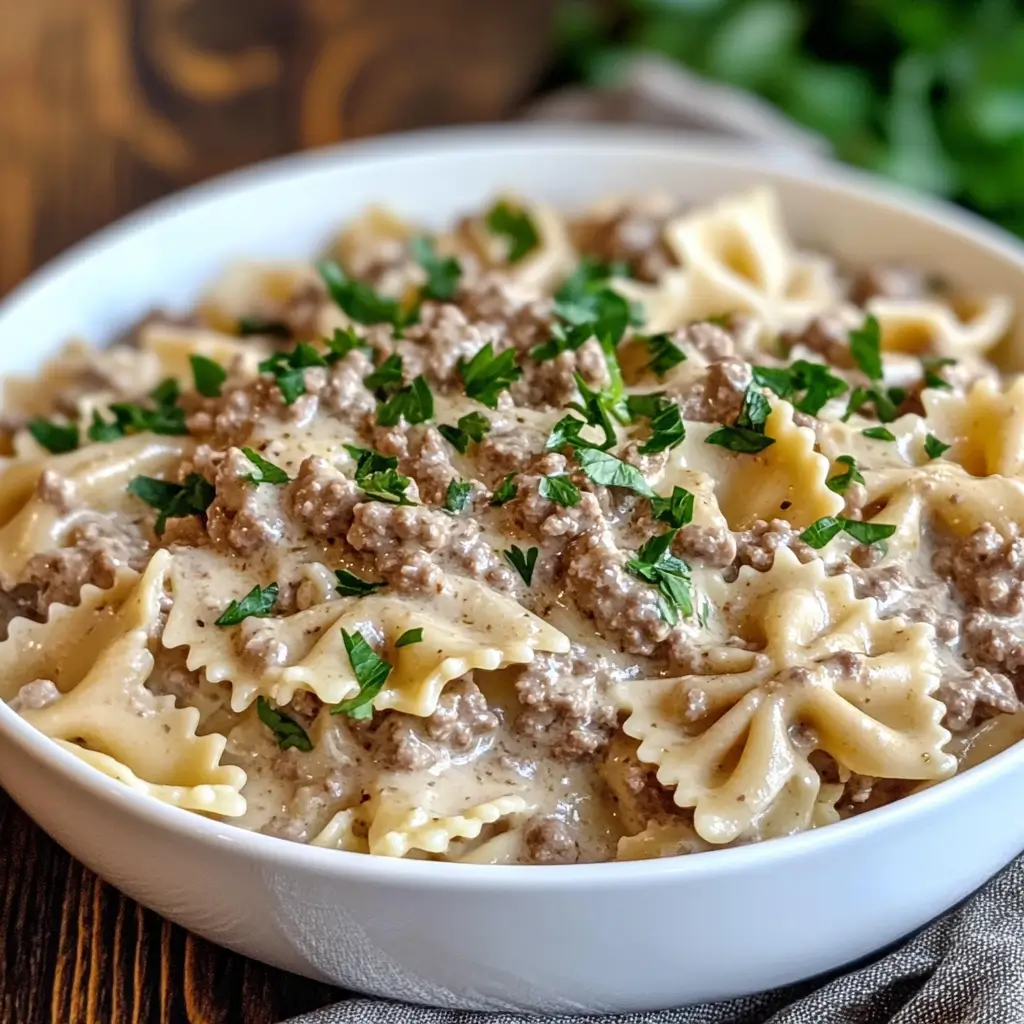Table of contents
Cranberry sauce in a can is a timeless addition to holiday meals, especially in the United States. With its vibrant color and tangy-sweet flavor, this classic side dish complements roasted turkey and other festive delicacies, becoming a staple of Thanksgiving and Christmas dinners. Cranberry sauce offers more than just a burst of flavor—there’s much more beneath the surface. This article delves into its rich history, nutritional value, creative uses, and much more, showcasing why this pantry-friendly option remains a cherished tradition.
History and Origin
Origins of Cranberry Sauce
Cranberries, which are native to North America, have been a part of culinary traditions for centuries. Indigenous peoples introduced the fruit to European settlers, sharing recipes for sauces and relishes that highlighted the tartness of cranberries. These were often paired with sweeteners like honey or maple syrup to create well-balanced accompaniments for meats like venison or turkey.
The earliest recorded recipe for cranberry sauce dates back to the early 18th century, marking its rise in popularity in colonial kitchens. Yet, it wasn’t until the 20th century that cranberry sauce became mass-produced and easily accessible.
Development of Canned Cranberry_Sauce
Canned cranberry sauce made its debut in the early 1900s, led by companies such as the Ocean Spray cooperative. The development of canning technology transformed food preservation, allowing cranberry sauce to become more widely available and have a longer shelf life. By the 1940s, canned cranberry sauce had become a common item in American homes, especially around the holidays.
The ease of canned cranberry sauce played a key role in its rise to popularity. It removed the need for fresh cranberries and the time-consuming preparation, offering a convenient, ready-to-serve option that became a staple at Thanksgiving and Christmas meals. Over the years, jellied cranberry sauce, with its smooth texture and classic can-shaped form, became an iconic symbol of holiday traditions.
Canned Cranberry Sauce
Composition and Types of Cranberry_Sauce
Canned cranberry sauce typically comes in two varieties: jellied and whole berry. Jellied cranberry sauce is smooth, with a uniform texture and a balanced sweetness that attracts many. Whole berry sauce, in contrast, contains pieces of whole cranberries, giving it a more rustic and natural feel.
The primary ingredients in canned cranberry sauce are cranberries, sugar, and water. Some varieties may include additional flavorings such as orange zest or spices to enhance their taste. Modern iterations may also cater to dietary preferences, such as reduced-sugar or organic versions.
Leading Brands and Market Trends
Ocean Spray remains the leading producer of canned cranberry sauce, dominating grocery store shelves with its classic recipes. Other brands have joined the market, presenting gourmet or artisanal versions of the classic recipe.
Market trends show an increasing demand for healthier and more sustainable choices, leading some manufacturers to explore reduced-sugar alternatives, natural sweeteners, or environmentally friendly packaging.
Shelf Life and Storage Recommendations
One of the main benefits of canned cranberry sauce is its long shelf life. Unopened cans can typically last for up to two years when stored in a cool, dry place. After opening, the sauce should be placed in an airtight container and stored in the refrigerator, where it will stay fresh for approximately 10–14 days.
Proper storage is key to maintaining the flavor and texture of cranberry sauce. Avoid leaving an opened can at room temperature for extended periods, as this can lead to spoilage.
Health Benefits
Nutritional Value of Canned Cranberry_Sauce
Cranberries are renowned for their nutritional profile, and even in canned form, cranberry sauce retains some of these health benefits. A typical serving of canned cranberry_sauce is relatively low in calories, with most of its energy coming from added sugars. While it is low in nutrients, cranberry sauce does offer small amounts of vitamins and minerals, including vitamin C, manganese, and dietary fiber (particularly in whole berry varieties).
The main nutritional drawback is the sugar content. Many canned versions are sweetened to balance the natural tartness of cranberries, making portion control essential for those monitoring their sugar intake. Still, when consumed in moderation, canned cranberry sauce can fit into a balanced diet as a flavorful accompaniment.
Antioxidants and Their Health Impacts
Cranberries are rich in antioxidants, particularly flavonoids like quercetin and anthocyanins. These compounds are known for their potential health benefits, including reducing inflammation, supporting heart health, and improving immune function.
Studies have also suggested that cranberries may help in preventing urinary tract infections (UTIs) due to their proanthocyanidins, which can inhibit the adhesion of bacteria to the urinary tract lining. While the processing of cranberries into canned sauce reduces the concentration of these compounds, some antioxidant properties remain intact, contributing to overall wellness.
How to Incorporate Canned Cranberry Sauce Into a Balanced Diet
Canned cranberry sauce isn’t limited to holiday dinners—it can be incorporated into a balanced diet throughout the year with some creativity.For example:
- Pairing with proteins: Try it as a glaze or topping for lean meats such as turkey or chicken.
- Adding to breakfasts: Swirl it into oatmeal or yogurt for a fruity kick.
- In desserts: Incorporate it into baked goods such as muffins or cakes for natural sweetness and color.
By balancing its use with nutrient-dense foods and controlling portion sizes, cranberry sauce can be a delightful addition to a healthy eating plan.
Using Canned Cranberry_Sauce

Best Practices for Serving and Presentation
Canned cranberry_sauce is known for its ease of use, but a little effort in presentation can elevate its appeal. For a traditional presentation, cut jellied cranberry sauce into slices and arrange them on a platter, garnished with fresh herbs or orange slices. For whole berry sauce, spoon it into a decorative bowl and top with a sprig of rosemary or a dusting of citrus zest.
Warming the sauce slightly before serving can enhance its flavor and soften the texture, making it more appealing as a side dish.
Creative Ways to Cook and Bake with Cranberry Sauce
Canned cranberry_sauce is more versatile than many realize. It can serve as a base or ingredient in a wide range of recipes, including:
- Glazes for meats: Mix it with mustard, soy sauce, or balsamic vinegar for a savory glaze.
- Sandwich spreads: Combine with cream cheese or mayonnaise to add a tangy twist to sandwiches.
- Baked brie or appetizers: Layer it over baked brie or mix it into phyllo cups for easy appetizers.
- Cocktail mixers: Blend it into cocktails for a fruity and festive twist.
Transforming Canned Cranberry_Sauce With Simple Enhancements
Enhancing the flavor of canned cranberry sauce is easy with a few simple additions. Try stirring in fresh orange juice and zest for a citrusy brightness, or adding a pinch of cinnamon or nutmeg for warmth. For a more gourmet touch, incorporate chopped nuts or dried fruits like raisins or apricots.
Homemade vs. Canned Cranberry_Sauce
Key Differences Between Canned and Homemade Cranberry_Sauce
The debate between homemade and canned cranberry sauce is a longstanding one, often dividing families during the holidays. The primary differences lie in texture, flavor, and preparation time:
- Texture: Canned cranberry sauce offers a smooth, uniform consistency (jellied) or a chunkier option (whole berry). Homemade sauce, on the other hand, often includes whole cranberries, giving it a fresher and more rustic feel.
- Flavor: Homemade cranberry_sauce typically has a brighter, fresher taste due to the use of fresh or frozen cranberries and customizable sweeteners. Canned versions, while still delicious, have a more processed flavor due to added sugars and preservatives.
- Convenience: Canned cranberry_sauce wins in terms of convenience. It requires no preparation, making it a time-saver during busy holiday cooking. Homemade versions, while rewarding, require time to simmer and prepare.
Each has its place in the kitchen, and the choice often comes down to personal preference or the time available for meal prep.
Why Canned Cranberry_Sauce Remains Popular
Despite the appeal of homemade cranberry sauce, canned versions remain a favorite for several reasons:
- Nostalgia: Many people associate the can-shaped, jiggly cranberry_sauce with fond holiday memories, making it a comforting and nostalgic option.
- Consistency: Unlike homemade recipes that can vary in flavor and texture, canned cranberry_sauce delivers a reliable taste every time.
- Affordability and Accessibility: Canned cranberry_sauce is widely available and budget-friendly, ensuring that it’s a staple in households across the country.
The enduring popularity of canned cranberry sauce highlights its ability to strike a balance between convenience, flavor, and tradition.
Sustainability and Packaging
Eco-Friendly Aspects of Cranberry Sauce Cans
The packaging of canned cranberry_sauce plays a significant role in its sustainability. Metal cans are among the most recyclable forms of packaging, with a high recovery rate compared to plastic or glass. By recycling cans properly, consumers contribute to reducing waste and conserving natural resources.
Manufacturers are also taking steps to improve the environmental impact of their production processes. Some brands now prioritize sourcing cranberries from sustainable farms or using energy-efficient methods in their facilities.
Recycling Tips for Consumers
Recycling cranberry sauce cans is simple and can make a significant difference. Here are a few tips:
- Clean the can: Rinse the can thoroughly to remove any residue before placing it in the recycling bin.
- Remove the label: If possible, peel off the paper label to make recycling easier for processing facilities.
- Check local guidelines: Recycling requirements can vary by region, so ensure that metal cans are accepted in your area.
By taking small, mindful steps, consumers can enjoy their cranberry_sauce while contributing to a healthier planet.
Cranberry_Sauce Recipes

Recipes Featuring Canned Cranberry Sauce
Canned cranberry_sauce is not just a side dish—it’s a versatile ingredient that can elevate a variety of recipes. Here are some standout ideas:
- Cranberry BBQ Sauce: Combine canned cranberry_sauce with ketchup, brown sugar, Worcestershire sauce, and a splash of vinegar for a tangy BBQ sauce perfect for grilling.
- Stuffed Acorn Squash: Mix cranberry_sauce with cooked quinoa, nuts, and spices, then stuff into roasted acorn squash halves for a hearty vegetarian meal.
- Cranberry Cheesecake Bars: Swirl cranberry_sauce into cream cheese filling atop a graham cracker crust for festive dessert bars.
- Turkey Cranberry Wraps: Spread cranberry_sauce on a tortilla, layer with turkey, spinach, and goat cheese, and roll it up for a quick lunch.
Quick and Easy Appetizers, Mains, and Desserts
Canned cranberry sauce can shine across courses:
- Appetizers: Serve with cream cheese and crackers for a simple dip.
- Mains: Use as a glaze for salmon or pork chops.
- Desserts: Spoon over vanilla ice cream or mix into a trifle.
Cultural Significance
Cranberry_Sauce in Thanksgiving and Holiday Traditions
Cranberry sauce, especially in its canned form, holds a deep cultural significance in the United States and Canada. Its association with Thanksgiving dates back to the mid-19th century when the holiday became widely celebrated. Cranberries, native to North America, were naturally incorporated into the feast, symbolizing the connection to the land and the harvest season.
Canned cranberry_sauce gained widespread popularity in the 20th century as an essential holiday side dish. Its ease of preparation made it a favorite among families, especially during the busy holiday season. Today, its presence on Thanksgiving tables is almost as ubiquitous as turkey and stuffing.
The traditional pairing of cranberry_sauce with turkey serves both practical and culinary purposes. The sauce’s tangy sweetness cuts through the richness of the meat, creating a perfect flavor balance that has become an irreplaceable part of the holiday dining experience.
International Uses and Adaptations of Cranberry_Sauce
Although cranberry sauce is most strongly associated with North American traditions, its appeal has spread internationally. In the United Kingdom, cranberry_sauce is often served with roast meats, particularly turkey and chicken. European chefs have adapted cranberry_sauce to pair with game meats, such as venison, highlighting its versatility.
In Australia and New Zealand, cranberry_sauce occasionally features in Christmas feasts, reflecting the influence of British holiday customs. The canned variety is favored for its convenience and availability in regions where fresh cranberries may be scarce.
Globally, chefs and home cooks alike are experimenting with cranberry_sauce, incorporating it into fusion recipes that blend traditional flavors with modern culinary trends.
Frequently Asked Questions
How long does canned cranberry sauce last?
Unopened canned cranberry_sauce can last up to two years when stored in a cool, dry place. Once opened, it should be refrigerated in an airtight container and consumed within 10–14 days for optimal freshness.
Can I freeze canned cranberry sauce?
Yes, canned cranberry_sauce can be frozen for up to three months. Transfer the sauce to a freezer-safe container, leaving some room at the top to allow for expansion. Thaw it in the refrigerator before use.
How can I make canned cranberry sauce taste homemade?
To give canned cranberry_sauce a homemade flair, stir in fresh orange zest, a splash of orange juice, or a pinch of warm spices like cinnamon and nutmeg. Adding chopped nuts or dried fruits can also enhance its flavor and texture.
Conclusion
Cranberry sauce in a can is more than just a holiday tradition—it’s a versatile, flavorful, and convenient ingredient that has earned its place in kitchens worldwide. From its origins in Native American cuisine to its role in modern holiday feasts, canned cranberry sauce remains a beloved staple. Whether you prefer it jellied, whole berry, or enhanced with a personal touch, this pantry classic continues to bring color, flavor, and nostalgia to tables everywhere.





